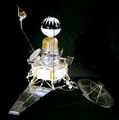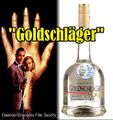Template:Selected anniversaries/January 28: Difference between revisions
No edit summary |
No edit summary |
||
| (40 intermediate revisions by the same user not shown) | |||
| Line 1: | Line 1: | ||
<gallery> | <gallery> | ||
||1533 | || *** DONE: Pics *** | ||
||1533: Paul Luther born ... physician, medical chemist, and alchemist. He will develop several drugs, such as ''Unguentum ex nitro'', ''Magistrum perlarum'', ''Magistrum collorum'', and ''Aurum potabile''. Pic. | |||
File:Ludolf van Ceulen.jpg|link=Ludolph van Ceulen (nonfiction)|1540: Mathematician and fencer [[Ludolph van Ceulen (nonfiction)|Ludolph van Ceulen]] born. He will spend a major part of his life calculating the numerical value of the mathematical constant π. | File:Ludolf van Ceulen.jpg|link=Ludolph van Ceulen (nonfiction)|1540: Mathematician and fencer [[Ludolph van Ceulen (nonfiction)|Ludolph van Ceulen]] born. He will spend a major part of his life calculating the numerical value of the mathematical constant π. | ||
| | File:Giovanni Alfonso Borelli.jpg|link=Giovanni Alfonso Borelli (nonfiction)|1608: Physiologist, physicist, and mathematician [[Giovanni Alfonso Borelli (nonfiction)|Giovanni Alfonso Borelli]] born. He will contribute to the modern principle of scientific investigation by continuing Galileo's practice of testing hypotheses against observation. | ||
||1611 | ||1611: Johannes Hevelius born ... a councillor and mayor of Danzig (Gdańsk). As an astronomer, he gained a reputation as "the founder of lunar topography", and described ten new constellations, seven of which are still recognized by astronomers. Pic. | ||
||1622 | ||1622: Adrien Auzout born ... astronomer and instrument maker. Pic: book cover. | ||
||1687 | ||1687: Johannes Hevelius dies ... was a councillor and mayor of Danzig (Gdańsk). As an astronomer, he gained a reputation as "the founder of lunar topography", and described ten new constellations, seven of which are still recognized by astronomers. Pic. | ||
||1701 | ||1701: Charles Marie de La Condamine born ... mathematician and geographer. Pic. | ||
||Samuel Thomas von Sömmerring | ||1830: Samuel Thomas von Sömmerring dies ... physician, anatomist, anthropologist, paleontologist and inventor. Sömmerring discovered the macula in the retina of the human eye. His investigations on the brain and the nervous system, on the sensory organs, on the embryo and its malformations, on the structure of the lungs, etc., made him one of the most important German anatomists. Pic. | ||
||1838: James Craig Watson born ... astronomer. He discovered 22 asteroids, beginning with 79 Eurynome in 1863. He was a strong believer in the existence of the planet Vulcan, a hypothetical planet closer to the Sun than Mercury, which is now known not to exist Pic. | |||
File:Sekiya Seikei.jpg|link=Sekiya Seikei (nonfiction)|1855: Geologist [[Sekiya Seikei (nonfiction)|Sekiya Seikei]] born. He will be one of the first seismologists, influential in establishing the study of seismology in Japan and known for his model showing the motion of an earth-particle during an earthquake. | File:Sekiya Seikei.jpg|link=Sekiya Seikei (nonfiction)|1855: Geologist [[Sekiya Seikei (nonfiction)|Sekiya Seikei]] born. He will be one of the first seismologists, influential in establishing the study of seismology in Japan and known for his model showing the motion of an earth-particle during an earthquake. | ||
|| | ||1855: William Seward Burroughs I born ... inventor. He invented a "calculating machine" (first patent filed in 1885) designed to ease the monotony of clerical work. Burroughs was a founder of the American Arithmometer Company (1886), which later became the Burroughs Adding Machine Company (1904), then the Burroughs Corporation. Pic. | ||
||1864: Émile Clapeyron dies ... physicist and engineer. Pic. | |||
||1880: Herbert Freundlich born ... chemist. Freundlich's main works dealt with the coagulation and stability of colloidal solutions. Pic. | |||
|| | File:Auguste Piccard.jpg|link=Auguste Piccard (nonfiction)|1884: Physicist and explorer [[Auguste Piccard (nonfiction)|Auguste Piccard]] born. He will make record-breaking hot air balloon flights, with which he will study Earth's upper atmosphere and cosmic rays, and invent the first bathyscaphe. | ||
|| | File:Henrietta Bolt.jpg|link=Henrietta Bolt|1885:Pilot, engineer, and alleged time-traveller [[Henrietta Bolt]] predicts that [[Auguste Piccard (nonfiction)|Auguste Piccard]] will "grow up to reach amazing heights, then go on to reach amazing depths." | ||
|| | ||1886: Hidetsugu Yagi born ... engineer and academic. He wrote several articles that introduced a new antenna designed by his colleague Shintaro Uda to the English-speaking world. Pic. | ||
|| | ||1888: Louis Joel Mordell born ... mathematician, known for pioneering research in number theory. Pic. | ||
||1889: Joseph-Émile Barbier dies ... astronomer and mathematician, known for Barbier's theorem on the perimeter of curves of constant width. Pic search. | |||
||1889: Edwin Crawford Kemble born ... physicist who made contributions to the theory of quantum mechanics and molecular structure and spectroscopy. During World War II, he was a consultant to the Navy on acoustic detection of submarines and to the Army on Operation Alsos. Pic search. | |||
|| | ||1892: Carlo Emilio Bonferroni born ... mathematician who worked on probability theory. Bonferroni is best known for the Bonferroni inequalities (a generalization of the union bound), and for the Bonferroni correction in statistics (which he did not invent but which utilizes his inequalities). Pic. | ||
|| | ||1903: Dame Kathleen Lonsdale born ... crystallographer who proved, in 1929, that the benzene ring is flat by using X-ray diffraction methods to elucidate the structure of hexamethylbenzene. She was the first to use Fourier spectral methods while solving the structure of hexachlorobenzene in 1931. Pic. | ||
|| | ||1910: Alfredo Capelli dies ... mathematician who discovered Capelli's identity. Pic search. | ||
|| | ||1911: Mathematician and academic Robert Schatten born. He made fundamental contributions to functional analysis, where he is the namesake of the Schatten norm and the Schatten class operators. He also studied tensor products of Banach spaces. Pic search. | ||
||1912: Jackson Pollock born ... painter. Pic. | |||
File: | ||1922: Robert W. Holley born ... biochemist and academic, Nobel Prize laureate. Pic. | ||
||1924: Mathematician and academic Wilhelm Paul Albert Klingenberg born. He worked on differential geometry, in particular on closed geodesics. Pic. | |||
||1925: Raja Ramanna born ... physicist and politician. He was associated with and directed India's nuclear program for more than four decades, and also initiated industrial defence programmes for the Indian Armed Forces. Pic. | |||
||1932: Japanese forces attack Shanghai. | |||
||1942: "Sighted Sub, Sank Same" incident. https://en.wikipedia.org/wiki/Sighted_sub,_sank_same | |||
||1945: Richard Baldus dies ... mathematician, specializing in geometry. Pic. | |||
||1945: Maxwell Fuller dies ... chess player. Pic. | |||
||1947: "Slinky" patent approved. | |||
File:Nikolai Luzin stamp.jpg|link=Nikolai Luzin (nonfiction)|1950: Mathematician, theorist, and academic [[Nikolai Luzin (nonfiction)|Nikolai Luzin]] dies. Luzin contributed to descriptive set theory and aspects of mathematical analysis with strong connections to point-set topology. | |||
File:Ranger 3-4-5 probe.jpg|link=Ranger 3 (nonfiction)|1962: [[Ranger 3 (nonfiction)|Ranger 3]] space probe misses the moon by 22,000 miles (35,400 km). | File:Ranger 3-4-5 probe.jpg|link=Ranger 3 (nonfiction)|1962: [[Ranger 3 (nonfiction)|Ranger 3]] space probe misses the moon by 22,000 miles (35,400 km). | ||
||1986 | File:Goldschläger (film).jpg|link=Goldschläger (film)|1964: Premiere of '''''[[Goldschläger (film)|Goldschläger]]''''', a spy film about liquor smuggling by gold magnate Auric Goldfinger, who plans to make Barry Goldwater President of the United States. | ||
||1986: Space Shuttle program: STS-51-L mission: Space Shuttle Challenger explodes after liftoff, killing all seven astronauts on board. | |||
File:Klaus Fuchs.jpg|link=Emil Julius Klaus Fuchs (nonfiction)|1988: Physicist [[Emil Julius Klaus Fuchs (nonfiction)|Emil Julius Klaus Fuchs]] dies. He was convicted of supplying information from the Manhattan Project to the Soviet Union during and shortly after the Second World War. | |||
||1990: F. W. Winterbotham CBE dies ... British Royal Air Force officer (latterly a Group Captain) who during World War II supervised the distribution of Ultra intelligence. His book The Ultra Secret was the first popular account of Ultra to be published in Britain. Pic. | |||
||1993: Helen Sawyer Hogg dies ... astronomer and academic, noted for pioneering research into globular clusters and variable stars. Pic (plaque), pic search. | |||
||1999: Leonard C. Lewin dies ... writer, best known as the author of the bestseller ''The Report from Iron Mountain'' (1967). No pics: https://www.google.com/search?q=Leonard+C.+Lewin | |||
||2012: Roman Juszkiewicz dies ... astrophysicist whose work concerned fundamental issues of cosmology. Pic. | |||
||2015: Yves Chauvin dies ... chemist and academic, Nobel Prize laureate for his work from the early 1970s in the area of olefin metathesis. Pic. | |||
|| | ||2017: John Norman Mather dies ... mathematician at Princeton University known for his work on singularity theory and Hamiltonian dynamics. Pic. | ||
</gallery> | </gallery> | ||
Latest revision as of 09:50, 25 January 2022
1540: Mathematician and fencer Ludolph van Ceulen born. He will spend a major part of his life calculating the numerical value of the mathematical constant π.
1608: Physiologist, physicist, and mathematician Giovanni Alfonso Borelli born. He will contribute to the modern principle of scientific investigation by continuing Galileo's practice of testing hypotheses against observation.
1855: Geologist Sekiya Seikei born. He will be one of the first seismologists, influential in establishing the study of seismology in Japan and known for his model showing the motion of an earth-particle during an earthquake.
1884: Physicist and explorer Auguste Piccard born. He will make record-breaking hot air balloon flights, with which he will study Earth's upper atmosphere and cosmic rays, and invent the first bathyscaphe.
1885:Pilot, engineer, and alleged time-traveller Henrietta Bolt predicts that Auguste Piccard will "grow up to reach amazing heights, then go on to reach amazing depths."
1950: Mathematician, theorist, and academic Nikolai Luzin dies. Luzin contributed to descriptive set theory and aspects of mathematical analysis with strong connections to point-set topology.
1962: Ranger 3 space probe misses the moon by 22,000 miles (35,400 km).
1964: Premiere of Goldschläger, a spy film about liquor smuggling by gold magnate Auric Goldfinger, who plans to make Barry Goldwater President of the United States.
1988: Physicist Emil Julius Klaus Fuchs dies. He was convicted of supplying information from the Manhattan Project to the Soviet Union during and shortly after the Second World War.








